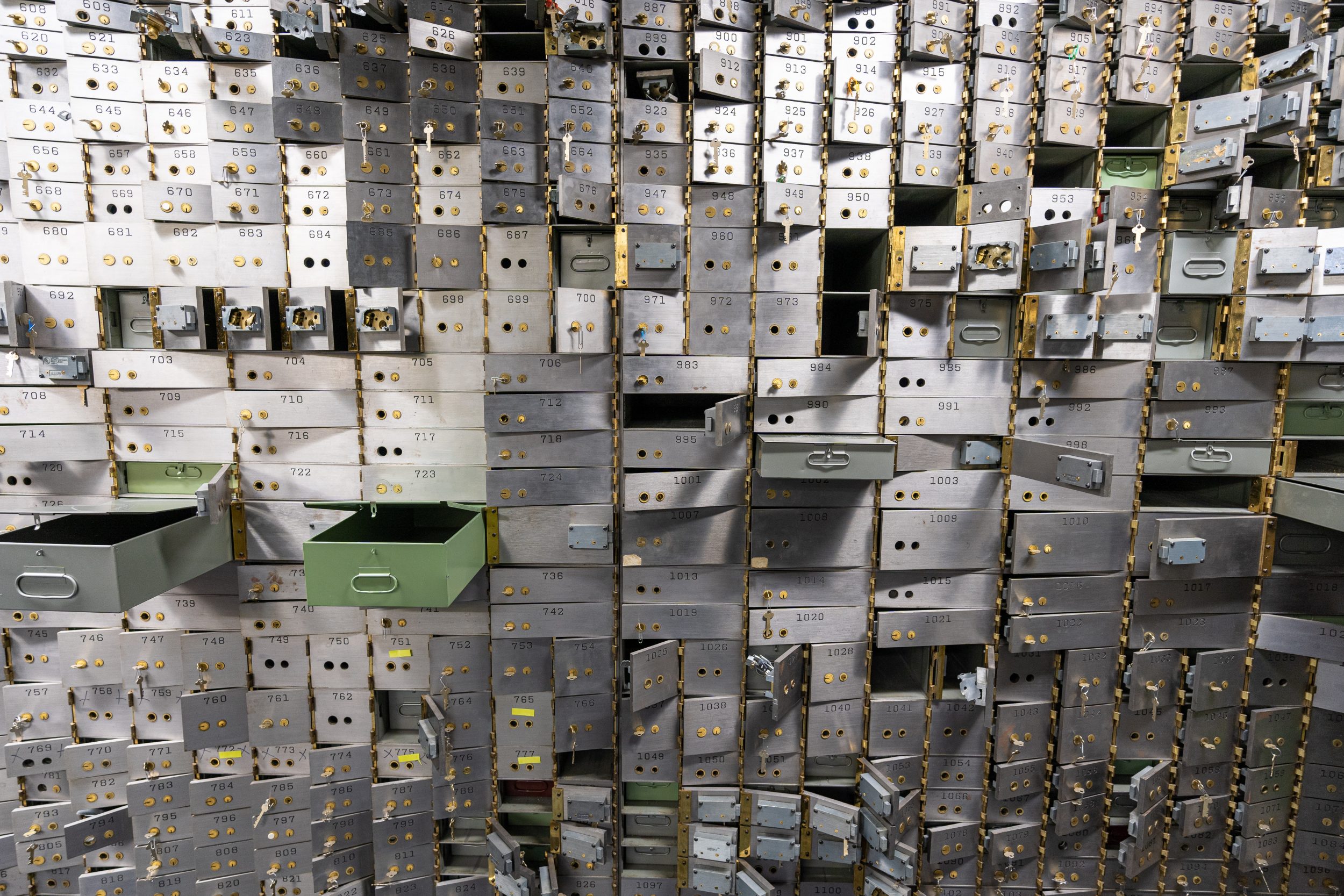Prosecutors, prison officials, and the journalists who cover them have a habit of suggesting that incarcerated people commonly live lavishly off of enormous trust account balances, the source of which could be ongoing criminal conduct. These misleading, fear-mongering narratives, which shed more heat than light, are common. The Washington Post, to name one repeat actor, has published a number of stories on this topic, including one focused on how people incarcerated in the federal system “are keeping large sums of money” in government-run accounts that are shielded from “criminal scrutiny and debt collection.” And yet another claiming that “more than 20 federal inmates have balances of more than $100,000 each,” adding up to more than $3 million.
These stories make it sound like nefarious, unregulated trust-account activity is a huge problem. If there is a problem, the federal Bureau of Prisons already has all the tools it needs to investigate suspicious transactions and take corrective action. But more importantly, the actual numbers provided in the articles tend to tell another story. One of the Post articles, for instance, notes that there are roughly 129,000 people incarcerated in BOP facilities, and the total balance of all trust accounts is somewhere around $100 million. If you subtract the $3 million in the 20 high-balance accounts, you arrive at an average account balance of $752 — that is, $97 million divided by 128,980 people. That’s a far more modest number than the six-figure sum the alarmist headline blares.
Behind these sensationalized accounts hides the true misconduct: A pervasive system of wealth extraction that preys on economically disadvantaged communities — particularly communities of color — for no other reason than to fund the continued operation of carceral systems and to generate corporate profit.
In recent years, there has been growing interest in how prisons function as part of a macroeconomy based on extraction of wealth and resources from those who are already having a hard time making ends meet. The same dynamic occurs on a microeconomic level within carceral facilities: Large sums of money, in the aggregate, are extracted from incarcerated people and their families to cover basic necessities (like communications services, food, medical care, and hygiene products) and other expenses related to their custody (like room and board). The money that people pay for these goods and services sometimes lands in the coffers of private firms, but public agencies also take a healthy share of the pie, in the form of contractually negotiated fees or “site commissions,” another term for kickbacks from the private firms that sell goods or services in correctional facilities.
Regardless of whether a private firm or the government is extracting the money, incarcerated people — and, frequently, their families — are increasingly forced to directly pay for the various costs of operating the system in which they are confined.
This abusive, profit-making machine is due for a reckoning. By examining the industry that has developed to facilitate, and profit from, carceral payment and money-transfer systems, advocates can devise strategies to dismantle it. To do this, one must first explore the flow of funds into and out of the correctional facility — that is, how money leaves family members’ pockets, enters the prison, and then leaves again — and how private companies and corrections agencies extract wealth from disadvantaged communities at every stage. From there, one must then look at the catalyst for this movement of funds: The expectation that incarcerated people pay for basic subsistence, often at artificially inflated prices.
Incarcerated people, just like everyone else, need money to survive. In part, they need it to pay for things in prison (more on that in a moment). But they also need it to help take care of people and obligations outside of prison, like child support or court-ordered restitution. As a result, prison walls cannot and do not sever people’s economic ties to the outside world. Money has to cross the wall. Each time it does, someone is there to take a cut.
Consider first the money coming into prison. Incarcerated people are likely to have lower-than average income when they enter custody, and even if they can snag a paying job inside prison or jail, wages are unlikely to exceed 50 cents per hour. As a result, incarcerated people rely heavily on financial support from family members. When researchers at New York University interviewed 51 people who had been released from the New York prison system, over three-quarters reported receiving regular or occasional monetary support from family members to pay for day-to-day expenses in prison.
Due to the racial disparities that are inherent in our system of mass incarceration, the financial burden of supporting incarcerated loved ones falls disproportionately on people of color — and women of color, in particular — and people who are economically disadvantaged. The Ella Baker Center’s research on the cost of incarceration found that nearly two in three families with at least one incarcerated loved one could not meet their families’ basic needs because of the financial costs of supporting that person. That research also found that one in three families goes into debt just to pay for phone calls and visits with their incarcerated loved ones.
Sending money to someone in prison or jail usually involves dealing with a private vendor that handles money transfers. A recent survey by Prison Policy Initiative reviewed the money-transfer setups at state prison systems and found that only seven state prison systems still process payments in-house — that is, without a vendor. Three|of these “in-house” states provide online options, but four only accept mailed payments. The remaining states, in contrast, have outsourced money transfers, with the majority granting monopoly franchises to the winning bidder, meaning that people in prison only have one option for this service. Only about eleven states have signed contracts with multiple vendors from which consumers can choose (and even then, pricing information is often so confusing that consumers cannot easily determine the lowest-cost option).
Due to a lack of competition and a desire to maximize revenue, both on the part of vendors and the correctional agencies that issue contracts, fees for money transfers to incarcerated people are high, with a nationwide average of around 20 percent. This is a shocking figure in light of the current free-world options for online, personal money transfers that are free or very cheap, thanks to the rise of services like Venmo, CashApp, and PayPal.
Once money is transferred into the correctional facility, it is held in a “trust account,” a pooled bank account that holds funds for incarcerated people whose individual balances are often treated as subaccounts. (The term trust is used because the correctional facility typically holds the account as trustee, for the benefit of the individual subaccount holders.)
When people leave prison or jail, so does their money. Upon leaving custody, people often have money left in their trust account from accumulated earnings or support from family; or, in the case of a short-term jail stay, the person being released is entitled to a return of whatever cash they had in their possession when arrested. In the past, people received their money in the form of cash or a check. But, working in concert with private-equity backed financial services firms, many jurisdictions have increasingly issued payments to released people in the form of a fee-laden prepaid debit card, known in correctional circles as a “release card.”
Fees for release cards are often outrageous, with the card provider charging people for things like having an account, using the account, not using the account, and seeking customer service. The type and amount of fees are so bad, and the concept of charging people to access their own money is so distasteful and harmful, that the Consumer Financial Protection Bureau recently took action. The agency found that a leading release-card company, JPay, violated federal consumer protection laws by, among other things, abusing their monopoly contracts to charge fees on captive consumers who had no way to avoid them. The CFPB required JPay to pay $4 million for consumer redress and a $2 million civil money penalty, and negotiated a settlement whereby the company agreed to not charge most types of fees for five years. Private litigants have also had success challenging release-card fees, and have even managed to defeat some arbitration provisions given the practical inability of cardholders to avoid using the debit cards that are foisted upon them.
Picking Pockets on the Inside
Although correctional facilities may provide (either directly or through private companies) some basic level of subsistence, fiscal austerity and mass incarceration have combined to put intense downward pressure on public spending on anything that directly benefits incarcerated people. The reduction in public spending thus requires incarcerated people and their loved ones to pick up the slack by paying for many basic necessities, harkening back to 18th-century English jails, where imprisoned debtors frequently bought and sold goods and services while confined. Coerced spending by incarcerated people can be grouped into three basic categories:
Communications. Communicating with loved ones, clergy, and attorneys is not only essential to people’s health and wellbeing while they are incarcerated, but also contributes to better results upon reentry. However, the cost of prison phone calls — which often includes add-on fees — is far steeper than the cost of phone service in the regular consumer market. Families and other support systems bear the cost of these inflated rates.
The Federal Communications Commission and state agencies have been making progress in lowering phone rates — and, in some places, local and state governments are covering the cost of calls. But other unregulated technologies are becoming common in correctional facilities. Video-calling, electronic messaging, and various programs delivered on personal tablets all come with hefty price tags, with many tablet programs even charging users a per-minute fee to read e-books or listen to music. The technology companies that control this market introduced tablets by hawking “free” services like educational programming and wellness apps, but even those fringe benefits appear to be falling by the wayside as these companies seek to monetize online educational offerings.
Another notable communications expense is the time-honored postage stamp. Electronic messaging in prison, if available, lacks many features that most people take for granted, like the ability to attach documents. Thus, incarcerated people remain uniquely dependent on postal mail, even as postal rates steadily increase and service quality declines. Although the cost of a stamp may not seem like much at first glance, at current postage rates, it would take the lowest paid incarcerated worker, who makes 17 cents an hour on average, more than four hours of work to pay for a single stamp.
Even if a free communication option — such as an in-person visit — exists, it may not be feasible for all families as a practical matter, forcing people to pay unaffordable amounts to stay connected with their loved ones. And during the pandemic, prisons and jails suspended in-person visits, which meant that phone calls became the main way to speak to a loved one. Unsurprisingly, people in jails used more phone minutes over a three-month period during the pandemic than they did in the same timeframe in 2019. This generated an increase in revenue for prison telecom vendors.
Commissary. Incarcerated people obtain many necessities of life at the commissary, a retail outlet that is often operated by a for-profit contractor that, like an airline, takes advantage of its captive audience to charge inflated prices. Commissary is where people can supplement the unappetizing, low-quality, too-small, and possibly spoiled or rotten food served in the cafeteria; purchase necessary hygiene products and over-the-counter medications; and buy basic supplies like paper, batteries, and small appliances.
In the past, people could buy certain supplies on the outside and ship them directly to their loved one on the inside. Today, people on the outside typically can only send care packages only through approved private vendors, and people on the inside can only purchase goods only through the commissary. This usually means jacked-up prices that incarcerated people and their loved ones cannot avoid.
Mandatory fees. The final major area of coerced spending consists of mandatory fees. These fees may be deducted “off the top,” or they might be assessed after the fund-transfer is complete. Off-the-top deductions function like garnishments: Many states establish a flat percentage that is deducted from incoming money transfers to pay for various types of legal debts, like court fees, child support, and restitution. The impact of these deductions is substantial. Family members essentially have to “gross up” money transfers — increasing the amount of the transfer so that the recipient receives the amount they actually need after mandatory deductions. Other fees are deducted from trust account balances for specific things like medical care or to cover the general cost of confinement — the so-called “pay to stay” fees.
The same private firms that control the flow of funds also provide numerous other services, almost always for a fee. For example, the company collecting the money for phone calls is likely the same company that facilitates money transfers for commissary accounts. That’s because the two companies that dominate the correctional phone market — Securus and Global Tel*Link — have bought an array of technology companies in order to offer a “diversified” range of services under bundled contracts. Bundling allows these private companies to obscure the actual cost of providing these various services (hiding cost information from both end users and the contracting correctional facility) and makes it more difficult for facilities to change vendors. It also means that a single private company will be the sole provider, usually for multiple years, of essential products and services, leaving incarcerated people and their families with no choice but to pay the high rates demanded by the monopoly provider. That private provider, in turn, may be contractually obligated to share a portion of the profits with the government.
This interdependence, or mutual captivity, among the various actors in our nation’s carceral economy feeds a cycle that, at first blush, seems intractable. Yet this system, like the sensational narratives that conceal much of it, is entirely synthetic; and what public policy has created, public policy can also demolish.
One thing we need is more research into the many unanswered questions about financial exploitation in the correctional sector. For example, the extent to which prisons collect site-commission revenue from phone calls is well documented, but the prevalence of site commissions with respect to money transfers could use more sunlight. Additionally, while we know that mandatory deductions from incoming money transfers are common, no one appears to have conducted a comprehensive analysis of the laws that make them possible, and family members have a particularly hard time finding relevant information about these deductions. And of course, the work of consumer watchdogs and public-interest litigators could yield a deeper understanding of these abusive practices, as well as redress for those who have been harmed.
Based on data from 2011 to 2016, Prison Policy Initiative has estimated that family members make upwards of $170 million in transfers per year — an estimate that is almost certainly too low. But the aggregate amount of transfers masks the real story: The small sums that families, many of them Black and poor, have managed to scrape together to send to incarcerated loved ones for their basic survival are being plundered by the state and corporations. That 20 percent or more of these modest sums is swept away and divided among private companies and correctional agencies is more than just standard profit-making; it is a government-sanctioned racket that robs people of their worth in more ways than one.
Image: Unsplash


